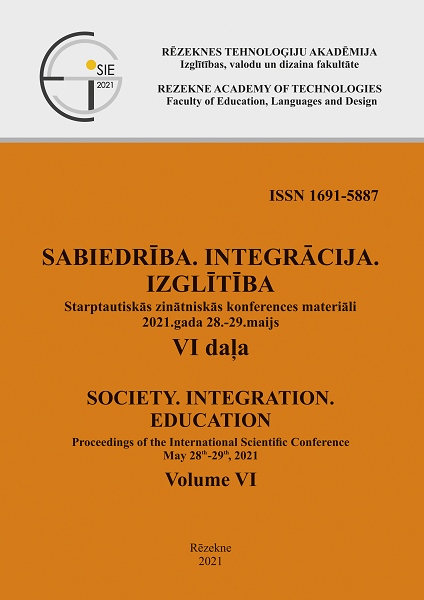SPECIAL ASPECTS OF FINANCIAL INSTRUMENTS VALUATION FOR TRAINING SPECIALISTS OF ECONOMIC MAJORS
DOI:
https://doi.org/10.17770/sie2021vol6.6438Keywords:
amortized cost, corporate securities, derivatives, fair value, financial instruments, valuationAbstract
Nowadays financial instruments market is the high-priority area of economic development in Belarus, where important place is given to creation the variety of corporate financial instruments, which requires prompt response from economic sciences.However, fundamentals of financial instruments valuation and ways of reflecting them in financial statements are complex issues that require special approach in the process of instruction economic disciplines, related to these topics. Therefore, the purpose of this study is to form systematic understanding the basics of financial instruments valuation based on the study their economic essence and the development of practical guidelines for valuation methods application. In the study have been proposed new, different from existing, questions that should be considered in the course structure when studying financial instruments by students of economic majors; have been offered practical guidelines on the ways of financial instruments valuation in the form of applied models that contribute to further understanding their economic essence, creating essentials for effective usage these instruments in future. In the study the following scientific methods were used: analysis, synthesis, generalization, induction, deduction, observation, formalization. The research is based on the provisions of IFRS, works of domestic and foreign economists, current Belarussian legislation on the considered issue.
Downloads
References
Abdel‐khalik, A. R. (2019). Failing Faithful Representations of Financial Statements: Issues in Reporting Financial Instruments. Abacus, 55(4), 676-708. DOI:10.1111/abac.12176
Beletskii, A. (2009). International securities market. Minsk: Publishing house of the IMU.
Birt, J., Rankin, M., & Song, C. L. (2012). Derivatives use and financial instrument disclosure in the extractives industry. Accounting & Finance, 53(1), 55-83. DOI:10.1111/acfi.12001
Butler, C. (2009). Accounting for Financial Instruments. UK, John Wiley&Sons Ltd.
Endovitsky, D. & Ishkova, N. (2007). Accounting for securities. Moscow: KNORUS.
Fargher, N., Sidhu, B., Tarca, A., & van Zyl, W. (2018). Accounting for financial instruments with characteristics of debt and equity: finding a way forward. Accounting & Finance. DOI:10.1111/acfi.12280
Holzmann, O. J., & Munter, P. (2016). Classification and Measurement of Financial Instruments: ASU 2016-01. Journal of Corporate Accounting & Finance, 27(5), 77-81.
Kolesnikov, V., & Torkanovsky, V. (1998). Securities. Moscow: Finance and statistics.
Kovaleva, V., & Hisamudinov, V. (2008). Accounting, analysis and audit of securities. Moscow: KNORUS.
Makhovikova, G. A., & Selishchev, A. S., & Mirzazhanov, S. K. (2010). The securities market. Moscow: Eksmo.
Mammanovich, P. A. (2006). Securities Market. Minsk: Modern school.
Masko, L., Lavrinenko, A. & Pankou, P. (2020). Corporate securities and derivatives markets in emerging economy: opportunities for non-financial organizations in the Republic of Belarus, in “New Challenges in Economic and Business Development 2020: Economic Inequality and Well-Being” proceedings, Riga, Latvia, October 2, 2020, 302-313.
Ministry of finance of the Republic of Belarus (2019). National Accounting Standard № 74 “Financial Instruments” (Standard).
Ramirez, J. (2015). Accounting for derivatives: advanced hedging under IFRS 9 (Second edition). United kingdom, John Wiley&Sons Ltd.
Shershenevich, G. (1914). Textbook of trade law. Moscow: Firm Spark.
Sosnawskene, O. (2008). Accounting for securities and currency transactions. Moscow: Grossmedia.
Wendy, L. et al. (2017). Derivatives. Hoboken, New Jersey: John Wiley & Sons.


